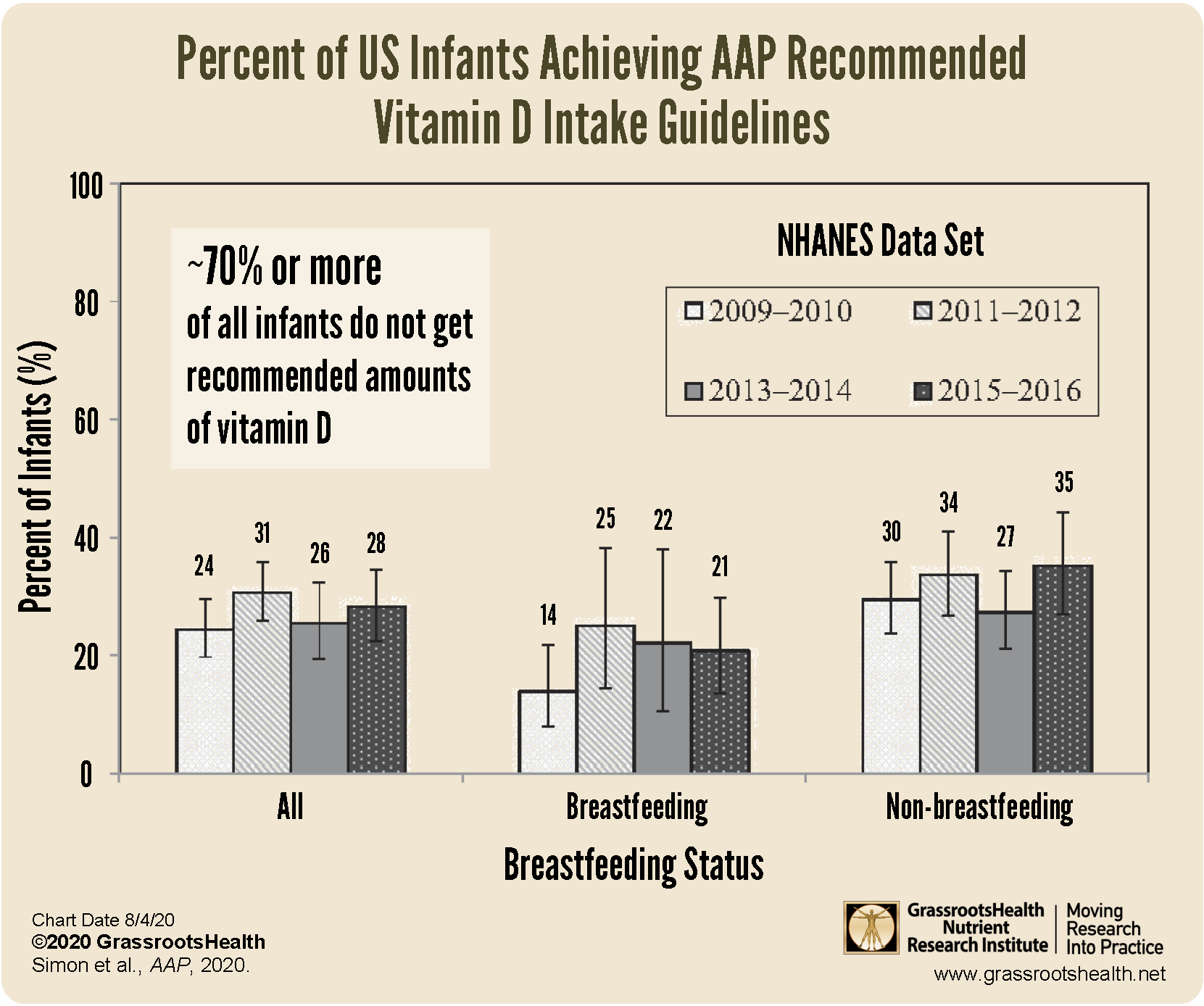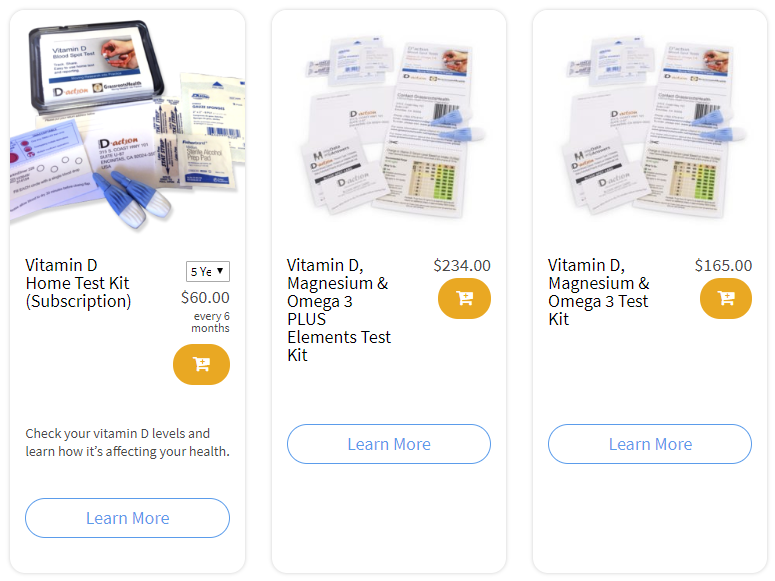Published on August 5, 2020
August is National Breastfeeding Month and the first week of August is World Breastfeeding Week. Breast milk is considered the best source of nutrition for infants except for its lack of vitamin D. This is why the American Academy of Pediatrics and the Institute of Medicine recommends supplementing breastfeeding infants with vitamin D. However, this deficiency is not due to an inherent defect in breast milk but rather to insufficient vitamin D intake in the mother. In this blog, we review recent findings on the lack of supplementation of both mothers and babies, despite the current recommendations.
Failure to Improve Despite Updated Recommendations
A 2020 review published by Simon and Ahrens looked at NHANES vitamin D intake amounts among US infants for the years 2009 – 2016. NHANES is the National Health and Nutrition Examination Survey, a program run by the Centers for Disease Control (CDC) to assess health and nutrition status of Americans. The authors found no increase in the percent of infants achieving the recommended vitamin D intake since the American Academy of Pediatrics revised their guidelines in 2008. In fact, only 27% of all infants met vitamin D intake guidelines, with breastfeeding infants being less likely to meet the guidelines than non-breastfeeding infants.
How do we get these babies the vitamin D they need?
In 2015, Drs. Bruce Hollis and Carol Wagner, two scientists from our GrassrootsHealth panel of vitamin D experts, published results from a clinical trial comparing 334 exclusively breastfeeding women in the United States assigned to either 400 or 6400 IU/day of vitamin D for 6 months. Infants in the 400 IU group received oral vitamin D supplementation of 400 IU/day and infants in the 6400 IU group received no supplemental vitamin D. At the start of the trial, the average vitamin D level was 33 ng/ml in the 400 IU group and 36 ng/ml in the 6400 IU group. After 7 months, women in the 6400 IU group safely and significantly increased their vitamin D levels compared to women in the 400 IU group (60 vs. 32 ng/ml, P<0.0001) and their infants achieved a vitamin D level similar to infants receiving 400 IU/day (43 vs. 44 ng/ml).
6400 IU vit D/day for mom = Sufficient mom AND baby
Daily intake is most important
 One of the most important takeaway messages from this research is that breast milk can be an adequate source of vitamin D for the infant if the mother takes enough of a supplement daily! (Adequate daily sun exposure would also have the same result, but that was not part of this research study.)
One of the most important takeaway messages from this research is that breast milk can be an adequate source of vitamin D for the infant if the mother takes enough of a supplement daily! (Adequate daily sun exposure would also have the same result, but that was not part of this research study.)
In earlier research, Hollis analyzed how vitamin D is transferred from the mother to the baby and found that it is transferred primarily in its parent form as vitamin D3 rather than 25(OH)D, the compound that is most commonly measured in blood. Vitamin D3 has a half-life of approximately 12 – 24 hours, and thus has to be replenished daily; 25(OH)D has a half-life of approximately 3 weeks, so while intermittent dosing can maintain high levels of 25(OH)D, it will not be adequate for transferring the daily requirement of vitamin D3 to the breastmilk. Hollis recommends the standard of care for breastfeeding mothers to be 6,400 IU vitamin D per day. This is safe and effective and ensures both mother and baby will be able to achieve recommended levels of vitamin D of 40-60 ng/ml (100-150 nmol/L).
Your Vitamin D Level Matters! Test yours today
Ensure your vitamin D level, and that of your loved ones, is within the recommended range for health. Doing so will also help support a healthy immune system! Test today to find out your level of vitamin D and other nutrients important for health at all life stages.
Are You Getting Enough Vitamin D to Help Yourself?
We’re in a time of great crisis that could be greatly affected by making sure you and everyone you know has a serum level of at least 40 ng/ml. Help us help you.
Do you know what your vitamin D level is? Be sure to test today to find out, and take steps to keep it within a target of 40-60 ng/ml or 100-150 nmol/L! Give your immune system the nutrients it needs to support a healthy you and protect yourself from unnecessary diseases.
GrassrootsHealth Nutrient Research Institute is preparing to do a Community RCT with the use of our myData-myAnswers nutrient health system that over 15,000 people are already using for their health. We will demonstrate how one can use the Nutrient Research Model established by Dr. Robert Heaney to establish the effect of vitamin D serum levels of at least 40 ng/ml (100 nmol/L) on risk reduction with different ethnicities in the population. Please let us know if you’re interested in helping sponsor this project.
CLICK HERE for updates and new information about the project.
Through GrassrootsHealth Nutrient Research Institute, you can also test your essential elements magnesium, copper, zinc and selenium, toxins such as lead, mercury and cadmium, as well as your omega-3 levels, inflammation levels and thyroid stimulating hormone (TSH) level. Find out your levels today! Log on to the test selection page (click the link below) to get your tests and see for yourself if your levels can be improved.
Make sure you track your results before and after, about every 6 months!
Click Here to Access the Test Page
How can I track my nutrient intake and levels over time?
To help you track your supplement use and nutrient levels, GrassrootsHealth has created the Personal Health Nutrient Decision System called
For each specific supplement, you can track what days you take it, how much, and many other details. This will help you know your true supplemental intake and what patterns of use work for you to reach and maintain optimum nutrient levels. Check it out today!









